Planting grass seed is the most effective and economical way of establishing a new lawn. In addition to that, seeding can also help you fix a patchy turf or a thinning lawn and make your lawn look fuller and greener.
However, you cannot just throw seeds around at any time of the year and expect to grow a lush green, healthy lawn. Timing plays a crucial role in efficient grass seed germination and healthy grass growth. In this article, let’s discuss when to plant grass seed in spring.
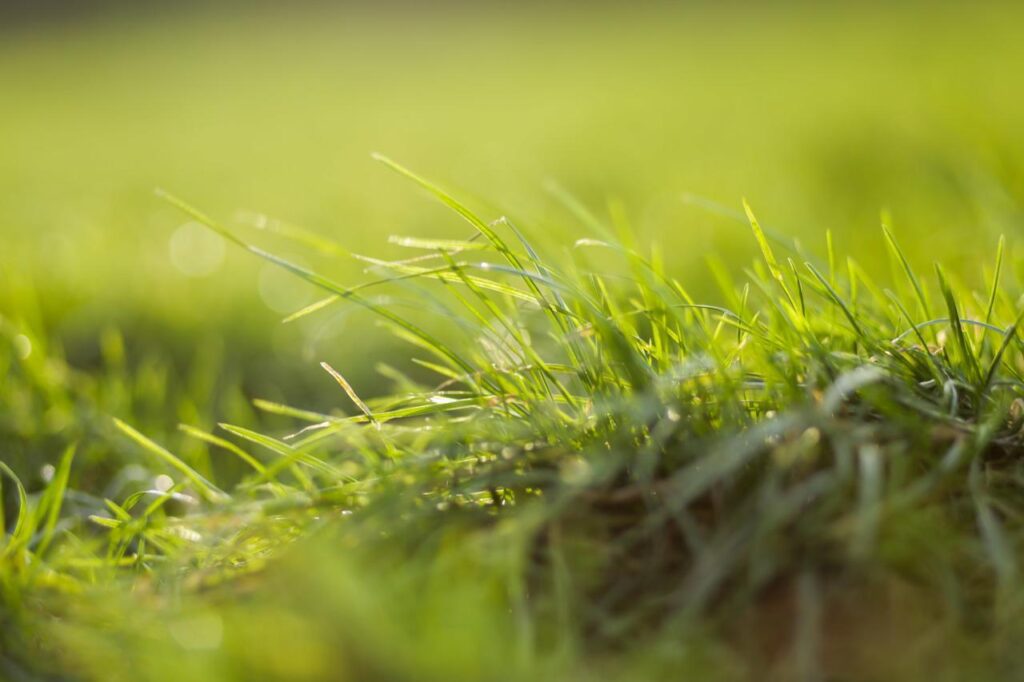
Planting seed at the right time helps grass seedlings grow and flourish better.
So, what is the best time to plant grass seed? Simply put, it all depends on the type of grass that you intend to grow on your lawn. For warm-season grasses such as St. Augustine grass, Bermuda grass and Centipede grass, spring is the best time to plant grass seed. In contrast, fall is the best time to plant grass seeds for cool-season grasses like Fescue grass, Rye grass and Kentucky bluegrass.
However, spring is the time when most people plan to complete their outdoor projects or rejuvenate and improve their home lawns. Now, this is okay for warm-season grasses, but planting seeds in spring becomes an issue for cool-season grasses. It is because cool-season grasses do not do well in spring and summer heat.
Nonetheless, if done properly and at the right time, you can still create a lush green cool-season grass turf by planting the seed in spring. So, let’s go ahead and see when and how you should plant grass seeds in spring as well as how to care for the grass seeds that were planted in the spring.
RELATED: What Is The Best Time To Fertilize Your Lawn, Before or After Rain?
Why Is Timing Important When Planting Grass Seeds?
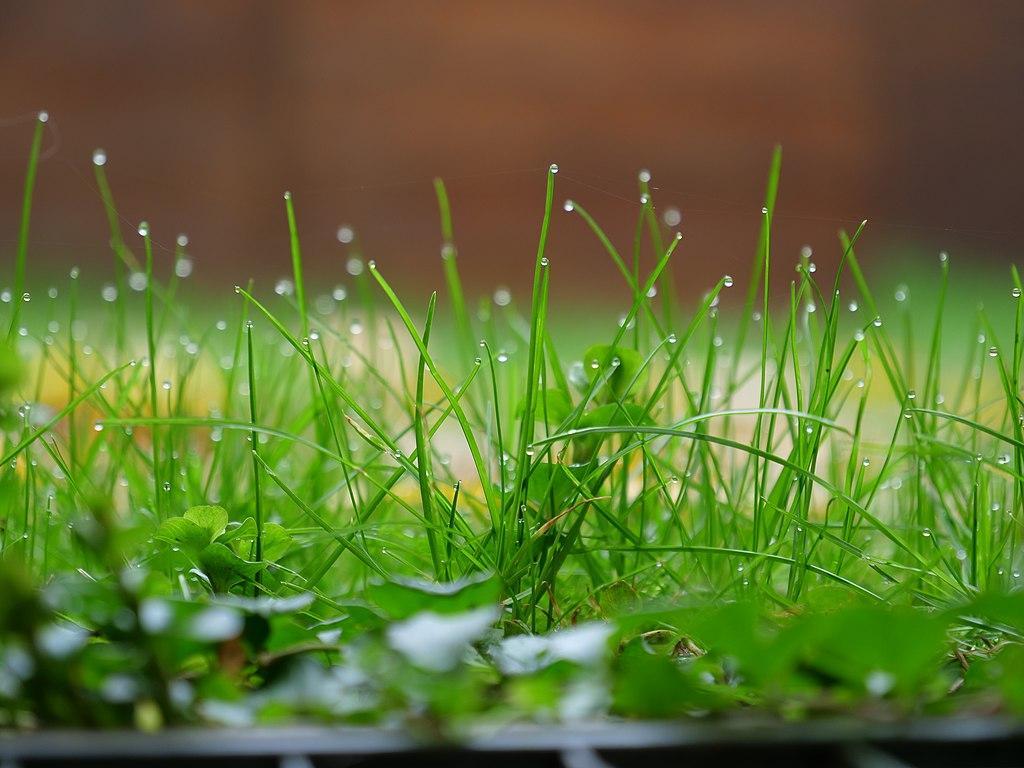
One way to ensure that your lawn can flourish properly is to plant grass seeds at the right time.
When your sight is set on having a lush green lawn, proper timing can make the difference between sweet success and something less. Seeds grow best when their natural period of active growth aligns with the planting season.
So, whether you are growing a cool-season grass or a warm-season grass, aligning your seeding timing with the seeds’ natural period of active growth can help your grass grow quickly and flourish properly in both the short- and long-term.
Depending on where you live and what type of grass you want to grow in your yard, the best time to plant the seed in spring or any other season will vary. It is because different grass types have different peak growing seasons.
And the timing of the peak growing season also varies from place to place, even within the same season. Confused? Well, let’s discuss this in a bit more detail!
Best Time To Plant Cool-Season Grasses
Cool-season grass seeds germinate best when nighttime soil temperatures are around 55°F, and daytime air temperatures are around 60°F to 75°F. Usually, this happens in late summer or early fall. However, the farther north you live, the sooner the ideal time for planting seeds and the cool season arrives.
As a general rule, make sure that you plant your cool-season grass seeds at least 45 days before the first frost falls. This will ensure that grass seeds and new seedlings have had plenty of time to establish themselves in the soil before frost kills them.
Best Time To Plant Warm-Season Grasses
As far as warm-season grasses are concerned, the best time to plant grass seeds is when the nighttime soil temperatures are around 70°F, and daytime air temperatures are around 80°F or more. This usually happens between late spring and early summer.
The soil is still warm during this time, and it also gives the grass seed the added advantage of seasonal rains. This ensures that germinating seeds stay warm and have plenty of moisture to grow and flourish properly.
Best Time To Plant Grass Seed In Northeast
If you live in the Northeast, August 15 to September 15 or early fall usually is the best time to plant grass seeds. During this time, nights are cool, and days are warm, which helps with the seed growth. Moreover, lawns established in fall are far better equipped to deal with the hot summer than those established in spring.
Best Time To Plant Grass Seed In Midwest
The most prominent grasses in the Midwest are the cool-season grasses. As already stated in the article, the best time to plant a cool-season grass is in the fall. So, again aim for the early fall, i.e., mid-August to mid-September, to plant grass seeds.
RELATED: How Many Square Feet Are In A Pallet Of Sod | How Big Is A Pallet Of Sod?
So, What Is The Best Time To Plant Grass Seed In Spring?
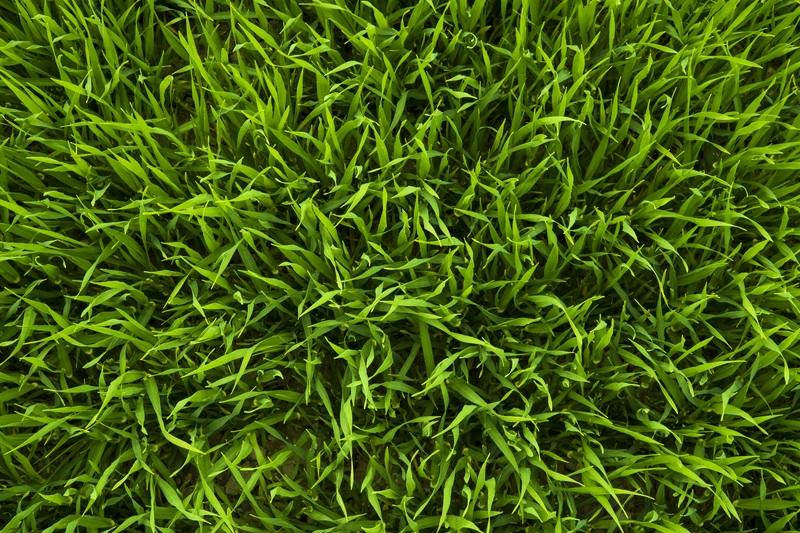
Mid-March through early April is usually the best time to plant grass seeds in spring.
Generally, spring is not considered a good time to plant grass seeds, especially not for cool-season grasses.
This is because many annual weeds start growing during this time which can smother your newly sprouting grass. Moreover, seeding a cool-season grass during spring gives it a shorter establishment period before the summer heat arrives.
That is why experts suggest waiting until late spring or early fall to plant grass seeds. At this time, many weeds will have started fading away, and the temperatures will be relatively cooler, allowing the cool-season grass to flourish properly.
So, you need to wait for a time when soil temperatures are between or around 55°F and 60°F to plant grass seeds in the spring.
To save you from the trouble of guessing, we suggest that you buy a soil thermometer. Also, make sure that you plant the grass seed early enough that the grass can grow enough to survive the summer heat and drought.
Caring For Grass Seeded In Spring
The root system does not develop completely before the summer heat arrives when you plant grass seed in spring. So, if you are not committed to watering your lawn regularly, we highly recommend that you do not go for spring seeding.
Without regular watering, the newly sprouted grass will die very quickly from the summer heat, and you will be right back where you started. Moreover, grass seeded in spring also needs a bit more fertilization, so keep that in mind as well.
First, use a starter fertilizer when you are seeding in spring. Then, after four or five weeks of germination, use a slow-release nitrogen-high fertilizer.
Issues With Spring Seeding
Weeds are the biggest and most significant problem when it comes to planting grass seeds in the spring. Unfortunately, spring is the time when many weeds start flourishing and show rapid growth, especially the infamous crabgrass.
Fortunately, you can use selective herbicides to overcome this problem. However, you need to know which herbicide to use and when to use it for the best results. For crabgrass, use the herbicide in early to mid-May for the best results.
Preparing For Spring Seeding
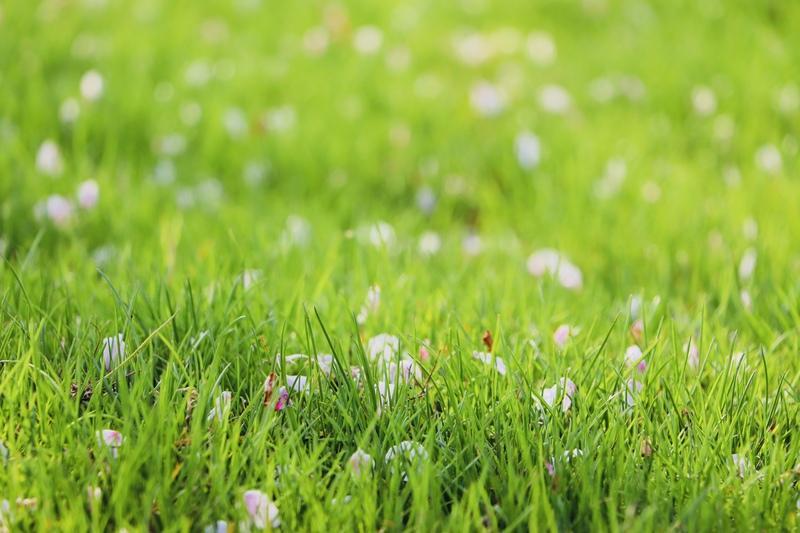
Soil preparation for spring seeding is just as necessary as timing.
When it comes to planting grass seed in the spring, all odds are stacked against you. However, you can still have success if you know what to do, and we are here to help you out.
January and February is the time when you should decide and get ready for seeding your lawn in the spring. If this time has passed, wait for the fall to come.
Soil conditions have a significant impact on seed germination and grass growth. No matter how accurately you time seeding your lawn in spring, if the soil is not well prepared, chances are, it will all go in vain. Here is how you can do it:
For Smaller Areas
If your lawn is small or you plan on planting grass seed over a small area, use an iron rake to remove weeds and dead grass from your lawn. You can also use the iron rake to loosen up the topsoil, which will help the seeds grow properly.
For Large Areas
If you plant grass seed on your entire lawn or an extensive land area, raking with an iron rake will not be feasible. In such cases, use a power rake and a core aerator to loosen up the soil. This will ensure good seed-to-soil contact, which is helpful in seed germination.
For Sandy Soils
If your lawn is established in sandy soil, we recommend that you get or rent a seed slicer. It will help you cut furrows in the topsoil in which later, you can plant the grass seeds.
RELATED: Lawn Care Pricing Guide | How Much Should You Pay For Lawn Care?
Level Your Lawn
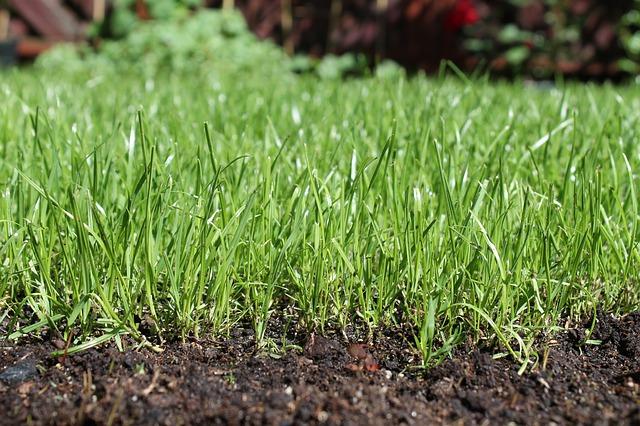
An uneven lawn will make mowing difficult and cause drainage issues.
It is highly recommended that you level your lawn before planting seeds in the spring. If the lawn is not leveled correctly, upcoming seasonal rains or even watering your lawn in the future can cause water drainage issues. In addition, a soggy lawn looks messy and is also more prone to fungal diseases and pest attacks.
We recommend that you create a one to two-degree slope in the opposite direction of your home. Do not make the slope steeper than this, as it will result in moisture escaping too quickly from the lawn, which is terrible for germinating seeds.
In addition to that, also level out any depressions or bumps on your lawn. The pits can collect water, and the bumps can make walking and mowing difficult. Use mulch, compost or topsoil to fill holes in your yard.
Conduct A Soil Test

A soil test can help diagnose soil/plant problems and help in quality grass growth.
Although grass seeds planted in the spring need more fertilization, it does not mean that you should throw bags of fertilizer one after the other continuously on your lawn. In fact, over-fertilization is extremely detrimental to grass, and it can even kill the newly germinating seeds and newly sprouting grass.
That is why experts suggest that you should always get a soil test before you plant grass seed in your yard, especially if it is in spring.
A soil test will give you tons of information about your lawn soil. For example, it will tell you which nutrients your lawn soil lacks and which type of fertilizer you should use for the best results.
Amending Soil PH
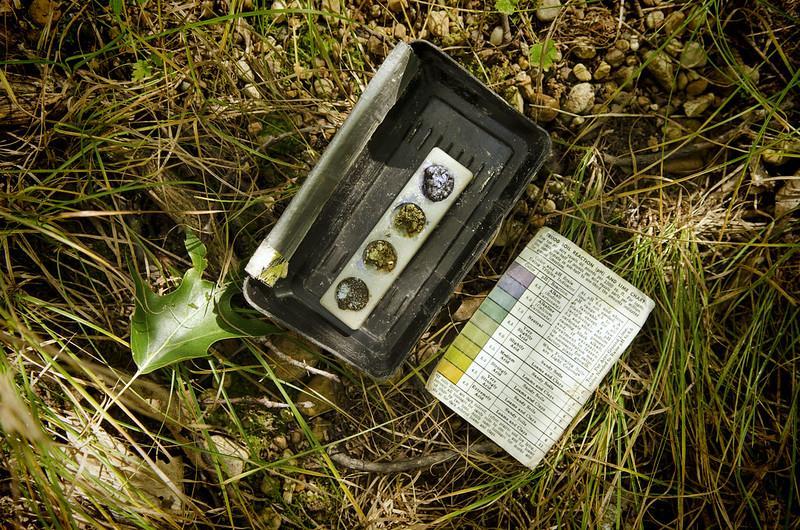
Most lawn and turfgrass species thrive in a soil pH between 6.0 and 7.5.
One of the biggest factors that affects nutrient availability to the grass is soil pH. If soil pH is too low or high, it can keep the grass from taking up nutrients efficiently from the lawn soil. This will result in stunted growth and can even kill newly sprouted grass plants.
Once again, a soil test can help you determine your soil pH. Every grass has its own narrow range of pH in which it grows the best.
A simple Google search can help you find the appropriate pH for the grass you intend to grow in your yard. If the soil is too acidic, just add some lime to it. And, if the soil is too alkaline for your desired grass species, use sulfur or fertilizer made for acid-loving plants.
Ensure Proper Fertilization
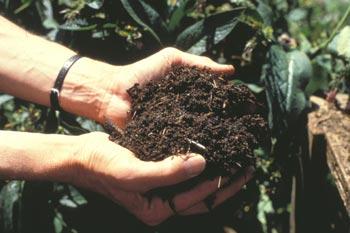
Proper fertilization will help the grass grow thicker and fuller.
Once you know what nutrients your lawn soil lacks after getting it tested, you can fertilize your lawn more appropriately.
If you have not tested your soil and are not sure which fertilizer you should use, we highly recommend using Scotts Turf Builder Starter Food Plus Weed Preventer for New Grass. It works like magic for the new grass.
After this initial fertilizer application, you will need to re-fertilize your lawn after four or five weeks. However, this time, use a fertilizer based on a slow-release formula. In addition to that, you can also apply Milorganite to your growing grass to boost its growth and make it greener.
Aerate The Soil
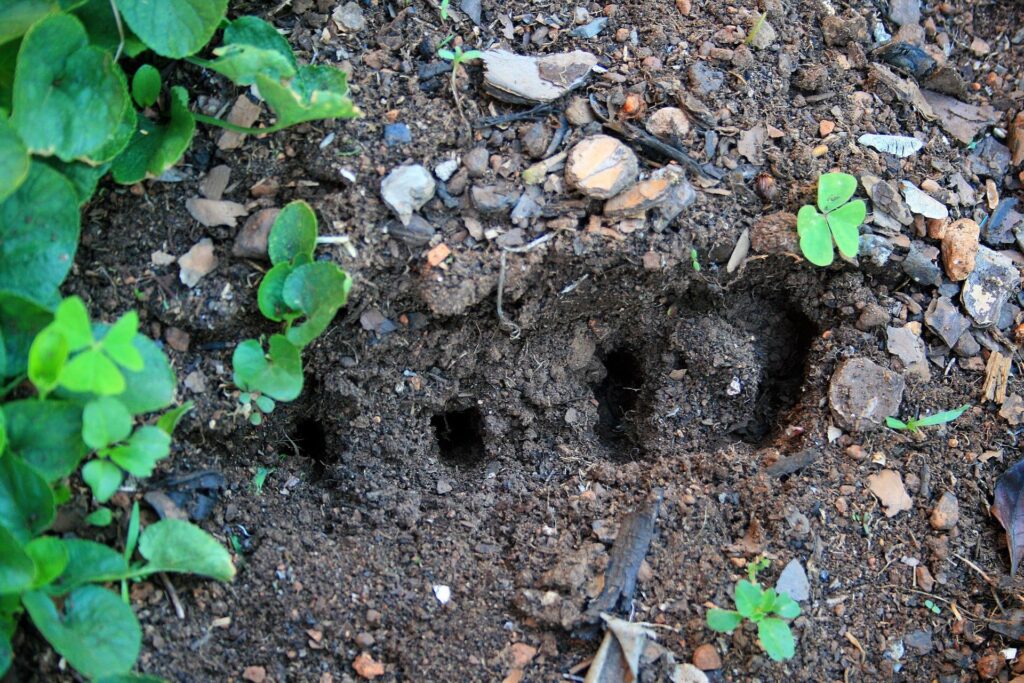
Aeration helps grassroots to go deeper and absorb more water and nutrients.
Before planting grass seed in spring, you must aerate the lawn soil, especially if it contains a higher proportion of clay soil. Aeration will help resolve any compaction issue in your yard and allows the air, water and nutrients to reach deeper into the ground.
In addition to that, grassroots also grow deeper in well-aerated soil. This makes the grass more resilient to drought, and they will be able to survive better in the upcoming summer heat. After aerating the soil, you can cover it with mulch to slow down water loss.
In addition to mulch, compost or peat moss can also be used to cover aerated soil. First, however, make sure it is free of weeds and pests.
Remove All Old Grass When Growing A New Lawn
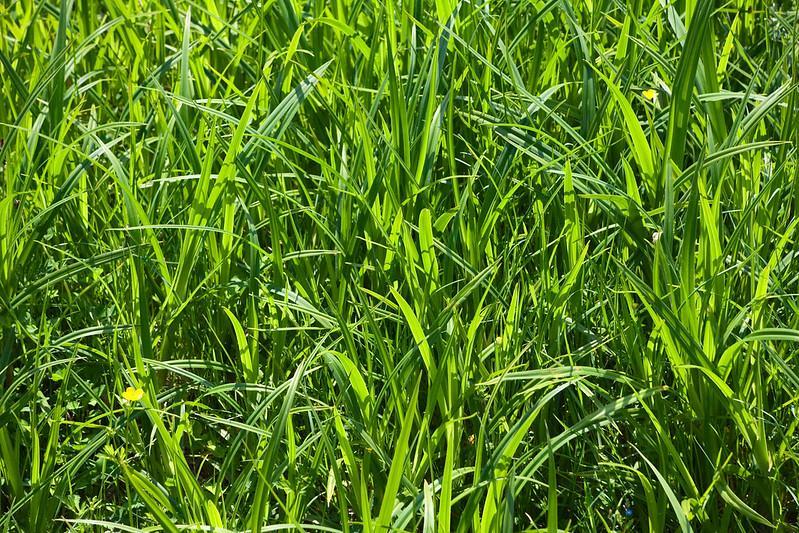
A sod cutter is the best tool to remove old grass from your lawn.
If you are trying to establish a new lawn, it is highly recommended that you remove all the old grass from your yard. It will help your lawn look more clean and uniform. There are many ways you can remove old grass from your lawn.
The best way to do it is by a sod cutter. A sod cutter will not only remove old grass from the lawn surface but will also help you remove grassroots. Some people also use non-selective herbicides but be very careful if you use them in your yard.
Fill In Bare Spots
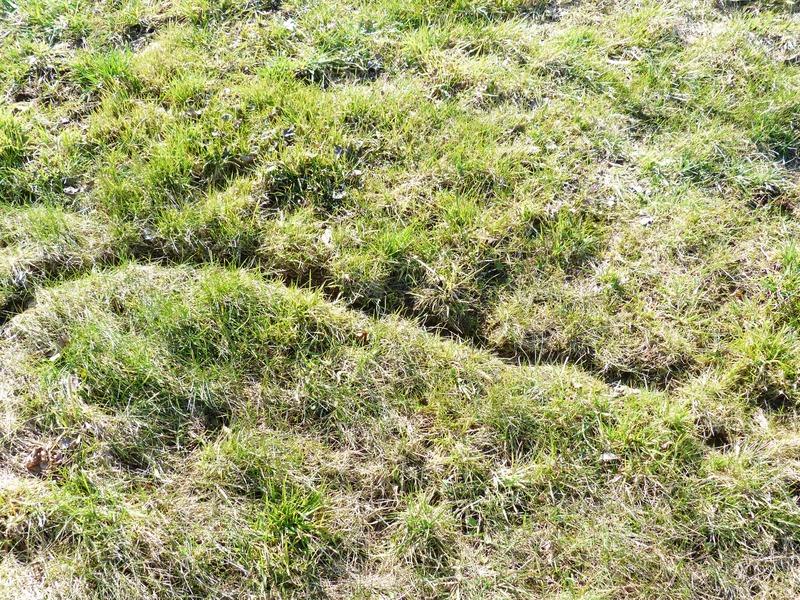
In addition to being unsightly, patchy turf is also prone to weeds.
Once you have prepared the soil and planted grass seeds in it, you will need to monitor the germinating seeds carefully and sprouting grass if you are to grow a lush green and thick lawn. In addition to regular watering and proper fertilization, this also involves checking your yard for any bare or naked spots.
If you see any, immediately plant grass seed in that spot. It will keep your lawn looking fuller, thicker and greener. Moreover, a dense turf is also an excellent defense against lawn weeds which no one likes and no one wants.
Maintaining Grass Seeded In Spring

Do not rush with spring seeded grass. It will take time before you see good results.
When you plant grass seeds in the sound, the cool-season grasses will take about a week before the seeds germinate. On the other hand, warm-season grasses can take three to four weeks to germinate, so do not worry and be hasty!
Here are a few things that you need to keep in mind when spring seeding your lawn:
- If the grass is in the shade, it will take longer to sprout.
- Maintain a regular watering schedule, or grass will dry out due to summer heat.
- Do not overwater the grass. It can make it prone to fungal attacks.
- Wait at least two months before you mow the grass.
- Add compost and mulch your lawn to promote healthy grass growth.
Conclusion On Spring Seeding The Lawn
Do not underestimate time! Time is of the essence when it comes to planting grass seeds. If you intend to plant a cool-season grass, do it in late summer or early fall. If you have a warm-season grass, plan to seed the lawn in late spring or early summer.
Avoid spring seeding if you can; however, if you need to do it, follow it up with a proper lawn care plan to ensure that the seeds germinate and the grass grows properly.
Frequently Asked Questions
Will grass seed grow if you just throw it on the ground?
The short answer is yes. If you just throw grass seeds on the ground, they will grow. However, the germination rate will be much MUCH lower than if you had covered the grass seed with soil after planting them. Proper seed-to-soil contact is essential for seed germination, and your chances of having that are pretty low if you just throw seeds on the ground.
What month is best to put grass seed down?
The best months to sow warm-season grass seeds are May through July, whereas the best months to put grass seeds down for cool-season grasses are August and September. However, if you have a grass seed mixture, you can put down grass seed anytime between March and October as long as you follow a proper lawn care plan.
Can grass seed survive frost?
More often than not, grass seeds can survive frost or freezing. However, it does not mean that you should seed your yard when there is a danger of frost. The frost will kill any new grass plants that have sprouted the seed and will also affect the seed germination in the coming season as well.
Can you use too much grass seed?
While you certainly can, it is not recommended. If you use too much seed, a lot of grass plants will sprout at once. This will cause severe competition between the grass plants as they grow. Some plants will survive while others will grow weaker and then later die as the competition gets stronger.
How do I overseed my lawn in the spring?
Spring is usually not a great time to plant new grass seeds. However, if you need to do it, prepare the soil by properly aerating and fertilizing it. Next, plant grass seeds and then maintain a regular lawn care schedule to promote healthy grass growth.
Sources For Further Reading
- Spring seeding. Retrieved May 30, 2022, from Purdue University Turfgrass Science at Purdue University
- Tips for reseeding lawns in spring. Retrieved May 30, 2022, from Michigan State University Extension
- Reseeding a Spring Lawn. Retrieved May 30, 2022, from University of Wisconsin-Madison Division of Extension
Editor’s Recommendations
How To Locate and Clean The Carburetor On A Lawn Mower? | A Beginners Guide
How To Get Rid Of Mushrooms In Lawn | Are Mushrooms Harmful To Grass?
Why and When Should You Add Iron To Your Lawn For The Best Results







